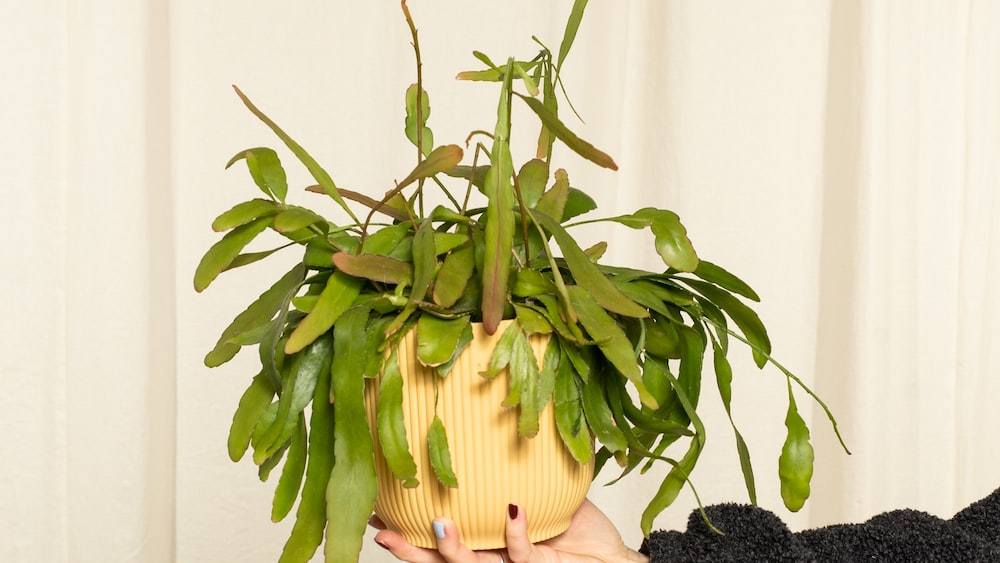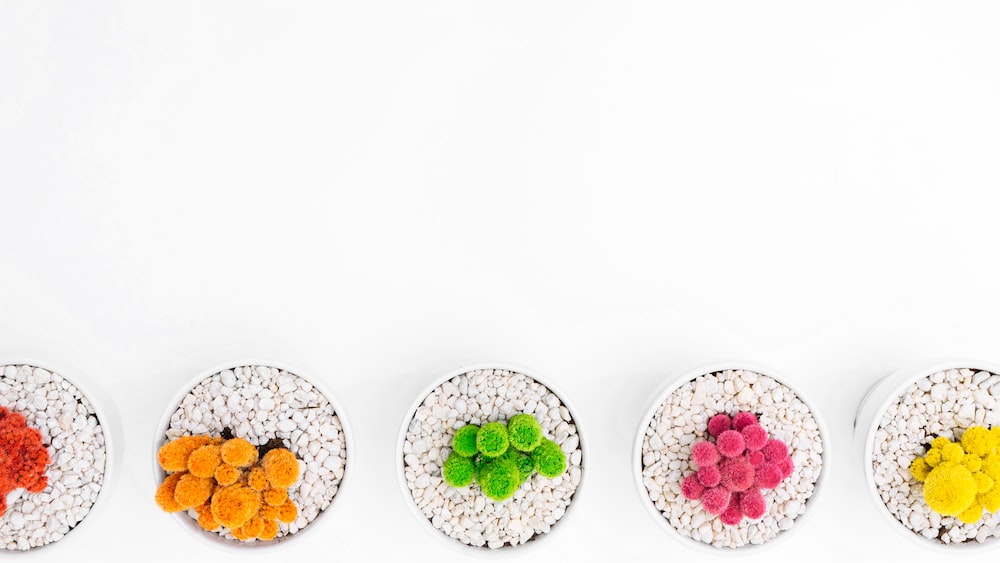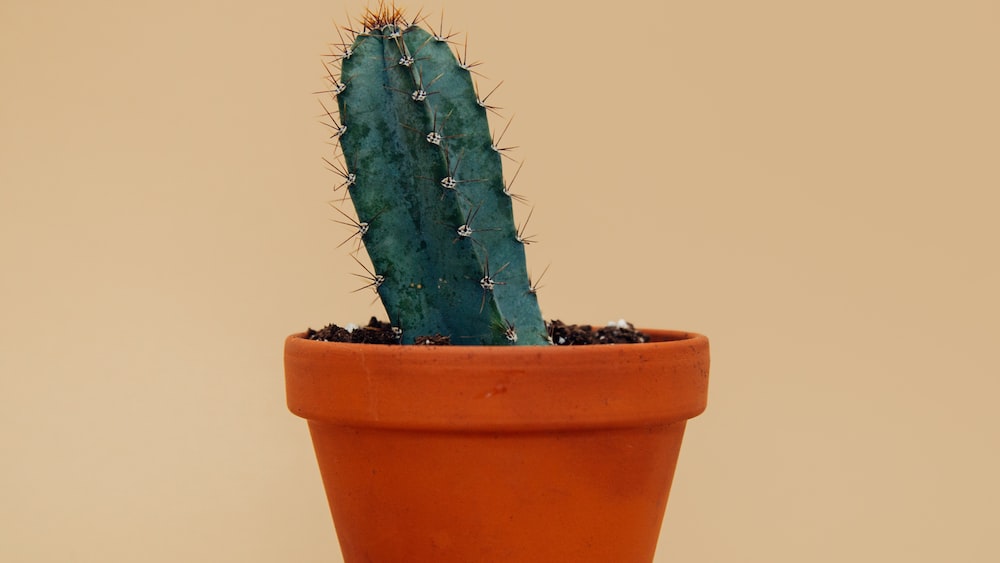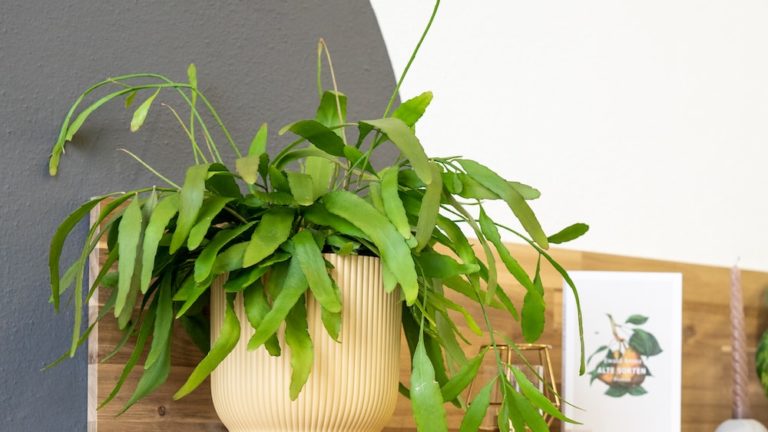Is Rhipsalis An Epiphyte? The Fascinating Truth Revealed!

Is Rhipsalis An Epiphyte? The Fascinating Truth Revealed!
Have you ever marveled at a plant which appeared as though it defied the very constructs of gravity, draping dreamily across its surroundings? As a steadfast admirer of the natural world, and more specifically of the beautifully varied world of cacti, I captured such a plant in my viewfinder on a routine trip to my local greenhouse.
Meet Rhipsalis – more of an enigma than a plant, I found it hanging unassumingly amongst vines embodying a charm whose roots lay in its distinct elegance. And it got me thinking, is Rhipsalis an epiphyte?
In today’s narrative, we will voyage through the intriguing characteristics of Rhipsalis, exploring its unique features, the dynamics of its growth, and unraveling the fascinating case of whether Rhipsalis truly is an epiphyte. This narrative is much more than a botanical fact-finding endeavor; it’s an intimate tale of my personal foray into the deep recesses of the world of Rhipsalis.
Understanding Rhipsalis
As we delve into the world of Rhipsalis, let’s brace ourselves to encounter an intertwining narrative of botany and unassuming beauty.
What is Rhipsalis?
Rhipsalis, affectionately known as the mistletoe cactus, belongs to the family Cactaceae. A native to the rainforests of Central and South America, Rhipsalis is a unique genus comprising around 35 distinct species. Bearing a surprising bane on the stereotypical image of a cactus, Rhipsalis has a somewhat whimsical distension of segmented stems rather than boasting the commonplace spiky surface we often associate with a cactus.
How did this chap come to dwell in my heart, you might ask? I first encountered its hanging beauty while searching for an addition to my hanging garden, and from that moment on, my affection and curiosity for this outlandish greenery grew.

The allure lies not only in their stunning physical attributes but also in their tenacious nature, a testament to the adaptability of life forms, whispering a subtle lesson on resilience.
Rhipsalis, the mistletoe cactus, defies expectations with its whimsical appearance and teaches us a lesson on resilience.
The Unique Characteristics of Rhipsalis
Rhipsalis is truly a captivating sight, its dangling tendrils draping elegantly from baskets or cascading over the edges of a hanging pot. Each segment of these tendrils comprises of flat or cylinder-shaped segments, reminiscent of beads on a necklace. However, the charm of these unusual cacti doesn’t end at their whimsical growth habit.
The allure of Rhipsalis grows when the plant blooms. The flowers are small, white or yellow, and are adorned with a subtle luminosity. Following the blooming season, the plant is covered with berries, usually red or white, adding another layer of color and charm.
Watching a Rhipsalis blossom was one of the most mesmerizing experiences for me. I remember holding my morning coffee, gazing as the early sunshine lit up the delicate flowers. It was a moment where nature’s exquisiteness conveyed a poetic nuance, a testament to the subtle miracles of life that we often take for granted.
Rhipsalis as an Epiphyte
As we explore deeper into the fascinating nature of Rhipsalis, we come face to face with the question – is Rhipsalis an epiphyte?
What is an Epiphyte?
Before we answer that, we must delve into understanding what an epiphyte is. Simply put, epiphytes are plants that grow on other plants. However, they are not parasitic. This symbiotic relationship only stems from their need for support, not nutrition.
Epiphytes are fascinatingly resourceful, deriving their nutrients primarily from rain, air, dust, and the debris accumulating around them. Isn’t it amazing how these plants have adapted to survive and overcome the obstacles that life throws at them? They truly are a testament to the resilience of all life forms.
Why Rhipsalis is Considered an Epiphyte
So, is Rhipsalis an epiphyte? The fascinating answer is – yes, it is indeed considered an epiphyte! Rhipsalis adopts an epiphytic life strategy in their natural habitat, preferentially growing on tree trunks or branches in the lush rainforests.
What makes Rhipsalis exceptional is its ability to adapt and prosper in seemingly adverse conditions, thriving high in the crooks and crevices of trees to catch a bit of the elusive sun. I can distinctly recall the moment of revelation, holding a Rhipsalis in my hands, marveling at the remarkable adaptability of nature embodied beautifully in this plant.
However, while they derive support from the host trees, Rhipsalis doesn’t sap their nutrients. The plant relies on the fallen leaves and other organic debris that gather on the tree bark for its dietary needs, ingeniously converting the challenges of its natural habitat into a thriving opportunity.
This organic material, as it decays, enriches the film of humus on the bark, providing a rich platform for Rhipsalis to nourish itself and prosper. An elaborate ballet of co-existence, if you will, where every entity plays its part harmoniously.
Types of Rhipsalis
Let’s further excavate our understanding of Rhipsalis by looking at a few noteworthy types.
Rhipsalis baccifera (Mistletoe cactus)
Rhipsalis baccifera, endearingly known as the mistletoe cactus, is the star of the Rhipsalis family. Combining its graceful beauty with its tenacious survival abilities, it elegantly showcases the resilience inherent in nature.

It’s the most widely distributed cacti species, signaling a subtle versatility and endurance, the likes of which humankind continually aspires. Its stems are pencil-thin, bearing immaculate flowers that subsequently transform into translucent berries, a sight that undoubtedly injects a dose of whimsy into any space it inhabits.
Rhipsalis burchellii
Speaking of eccentric elegance, another particular favorite of mine is the Rhipsalis burchellii. Immersed in its ethereal charm during a special field trip to Ecuador, I remember standing in the mist-laden rainforest, utterly fascinated by this variant of Rhipsalis.
Rhipsalis burchellii boasts of cylindrical, pencil-like stems adorned with delicate little bristles, while stunning white flowers primarily characterize its blooming season. And the spectacle doesn’t end there. Following the floral show, the plant burgeons with vibrant red berries, injecting a vibrant splash to its otherwise serene green palette.
Reflecting on its beauty in the twilight of the rainforest, I marveled at the resilience embodied by this cactus species in a habitat that many would find hostile. It’s on such occasions that we truly appreciate Mother Nature’s incessant drive to flourish against all odds.
Reflecting on the resilience of the Rhipsalis burchellii in a hostile rainforest habitat, we can appreciate Mother Nature’s drive to flourish against all odds.
Rhipsalis campos-portoana (Jungle Cactus)
I have always had an explicit love for the Rhipsalis campos-portoana, more commonly known as the Jungle Cactus. Its delicate branches spill down like a succulent waterfall, a breathtaking sight to behold as they dangle from their homely pots or find themselves nestled within the shadows of a forest canopy.
It is an evergreen tropical succulent that, with over 35 species within the same genus, seems to whisper stories of wilderness and wonder, of life thriving amidst adversity. Did you know, a study by Kenney and Bown (1981) categorized the Jungle Cactus as one of the few species that follow a trait known as phytogeographical distribution? A phrase that sings the notes of adaptability and resilience, much like life itself.
Rhipsalis cereoides
Every cactus has its subtle manner of expressing beauty. But, Rhipsalis cereoides dances a quiet waltz that leaves you in awe – the slight sway of its pendulous branches, the quiet rustle of tiny leaf segments, and even the soft heartbeat-like throb of its faint green color. It’s an engaging symphony, a testament to what makes cacti uniquely mesmerizing.
In the symphony of the cereoides, subtlety is the rhythm, and strength is the beat. Not to neglect it’s an epiphyte; Amidst a cycle of seasons and changing atmosphere, it clings to trees, beaming with life while drawing its sustenance from rain, air, and the sun’s sweet serenade. Experts like Jaeschke and Lynn (2011) have claimed this feat to be an adaptation mechanism, a trait that cactus enthusiasts echo unanimously.
Have you ever seen its flowers? If you’re as lucky as I have been, the glimpse of the cereal-white, bell-shaped flowers blooming on this species is as enchanting as witnessing a full lunar eclipse. It reminds the heart of why nature is the true epitome of beautiful complexity.
Rhipsalis crispata
Then there’s Rhipsalis crispata, a species that wears its heart on its…well, leaves! Its segmented, leaf-like stems are outlined with a curling edge, giving a peculiar aesthetic charm. Trust me; it is as whimsical as a typography artist’s finest flourish, sending your eyes on a merry ride around its wonderful distinctiveness.
Between you and me, the crispata is a touch dramatic. As an epiphyte, when mine doesn’t receive the right amount of light, it adorns a rouge blush. It’s a lovable spectacle – acting as a colorful reminder that every living thing has an infallible sense of identity and mirroring the simple yet profound principles of survival.
Caring for Rhipsalis
Rhipsalis, in all its epic varieties, is easier to take care of than commonly perceived. It demands nothing more than understanding – a simple comprehension of its conditions of growth: from where it should reside to how it likes to sip water. I am here to give you the best care tips based on my years of experience and backed by expert voices.
Ideal Location for Rhipsalis
Rhipsalis is a lover of indirect light; an east or north-facing window would make for the perfect location. These plants enjoy the shift of the sun through the day, bathing in its morning glory yet avoiding the harsh afternoon glare.

However, they won’t curse you for a lack of sunlight either. In nature, their stations are often shaded by the large canopy of trees. Hence, a little shadow does no harm. They prove to be the perfect indoor companions, greening up corners without demanding the perfect sunlit window.
Soil Requirements
Rhipsalis, being an epiphyte, has unique soil requirements. It prefers a well-draining soil mix, liberally laced with organic matter such as orchid bark, along with sphagnum moss, peat moss, or coconut coir.
As these plants naturally grow on trees, they’re accustomed to accessing nutrients from organic materials that have collected in the tree’s crevices. Hence, infusing the soil with such organic matter replicates their natural environment.
It’s a delicate balance to maintain – keep the soil moist but not soggy. A tip I have learned over time is to lay a foundation of pebbles or small stones at the pot’s bottom. This ensures good drainage and maintains the balance of moisture that Rhipsalis loves.
Rhipsalis, an epiphyte, thrives in well-draining soil enriched with organic matter to replicate its natural environment and maintain the delicate balance of moisture it requires.
Watering and Fertilizing
The watering needs of rhipsalis are akin to their spiritual doctrine of harmony. It neither likes to be too dry nor too wet. Watering thoroughly until it seeps from the drainage holes and then allowing it to dry out between waterings would be a safe routine.
When it comes to fertilizing, a balanced cactus mix during the growing season, once a month or so, is the ideal treat for these green gems. However, remember to dilute the feed to about half to prevent any nutrient burns.
Don’t forget that overwatering can lead to root rot- possibly the most dreaded ailment of all cacti. This genre of cacti are particularly susceptible to overfeeding as well, so it’s best to remember the golden concept of moderation.
Pruning and Overwintering
Pruning is an act of love for Rhipsalis. This form of cactus tends to grow rapidly during the growing season, and pruning helps maintain its shape and size. Be careful while pruning, though. Each cut leads to a new growth direction, a flower bud.
Essentially, overwintering is about bringing your Rhipsalis into a period of rest during the cooler months. During this time, watering should be reduced, but the soil should never be left completely dry. Keep the temperature above 10°C (50°F) for it to winter well.
Propagation of Rhipsalis
There’s a unique joy in seeing a piece of your beloved cactus give life to a new plant. Propagation of Rhipsalis is not a daunting task, and I’ll guide you through it in simple steps. As with all aspects of cacti care, patience and moderation are key. Happy Planting!
Propagating Rhipsalis by Cuttings
Dear reader, step with me into my garden. See those slender, pendulous branches of the Rhipsalis? Those are “mother” stems, ready to give birth to brand new plants. The art of propagation is like that of conducting a symphony, a symphony where new life bursts forth in vibrant crescendos.
To begin, free a healthy arm from the main plant gently. The scissors’ sharp, decisive snip should precisely cut at the juncture of stem and leaf. From there, it is a dance of patience; let the cutting rest in a shaded location, giving it time for the cut end to dry. This ‘callous’ forms a protective layer that helps prevent fungal infection during root and plant formation.
Stick the calloused end into your chosen substrate, typically a mix of potting soil and perlite. Ensure the cutting stands upright, providing it support if necessary. Remember, my friends, just as we thrive in an environment of love and care, so do our prickly companions. Regular watering and a well-lit place are what you can offer to this burgeoning life.

Propagating Rhipsalis by Seeds
Standing by my favorite Rhipsalis, I recall a spring morning when I discovered a crop of tiny seeds within a mature fruit capsule. My heart stirred with the inherent promise of new life. Propagating Rhipsalis by seeds requires patience, but the joy of watching a plant grow from such a small beginning is incomparable.
After extracting the seeds, spread them onto your chosen substrate. A mixture of half peat and half perlite creates an ideal environment for seed germination. Cover the seeds lightly with substrate and water regularly. Like a child, the seedlings need tender care and partial light to grow. The intricate process of nurturing life from a seed is profoundly emotional, as it is educational. Trust me, my compatriot of cactus love, there’s nothing quite like it.
The joy of watching a plant grow from a small beginning is incomparable, so spread the seeds onto your chosen substrate, water regularly, and provide tender care and partial light for the seedlings to grow.
Common Diseases and Pests
The realm of cacti, though seemingly hardy, isn’t immune to the insidious infiltration of pests and diseases. Holding a magnifying glass to discover mealybugs feasting on my dear Rhipsalis, or noticing the subtle dulling of color from a fungal infection, these are poignant moments that remind us that even the resilient have their weak spots. But fear not, intrepid cactus lover! With consistency, mindfulness, and quick action, we can protect our beloved charges from these devastating maladies.
Frequently Asked Questions
1. Are Rhipsalis toxic to pets?
Speaking of pets, Rhipsalis’ toxicity to our little friends is a vital query I often receive. To put your mind at rest, Rhipsalis is generally not considered toxic to pets. But as with any plant, it’s always best to prevent ingestion, as individual animals may react differently.
2. How often should I water my Rhipsalis?
If you’re contemplating how often to water your Rhipsalis, remember that they too, like us, enjoy a drink when thirsty but despise water-logging as much as we resent being overfed. During the growing season, when the plant is thirstier, watering once a week should suffice.
3. Can Rhipsalis grow in direct sunlight?
Whether Rhipsalis can grow in direct sunlight is a popular question I’ve often encountered. Unlike most cacti, Rhipsalis prefers indirect, filtered sunlight. Too much direct sun can scorch their delicate skin, causing irreparable damage.
4. How do I propagate Rhipsalis?
I am often asked, “Sophia, how do I propagate Rhipsalis?” Well, as discussed earlier, they can be propagated easily through cuttings or from seeds, depending on your preference for a direct or a more patient approach.
Conclusion
As I wander among the lush green and spiky textures of my garden, I reflect on this marvelous journey we’ve undertaken together. Is Rhipsalis an epiphyte? It is. But it’s also a testament to the resilience and adaptability of nature that we can witness right in our living rooms or balconies. A model for preserving in spite of harsh conditions, Rhipsalis teaches us to hang on, to grow, and be our beautiful selves, nurtured by love, care, and a little bit of sunlight.
In this shared pilgrimage of ours into the world of cacti and particularly Rhipsalis, we’ve discovered the peculiar joys of nurturing life, the whimsical excitement of propagation, and the reverence for this plant’s tenacity and will to survive.
And so, here I sign off, dear cacti companions, basking in the dappled sunlight of my Rhipsalis-studded veranda, endlessly marveling at their unique beauty. May we meet again in these digital pages, united by our shared love for all things green and prickly.
Keep growing,
Sophia.






